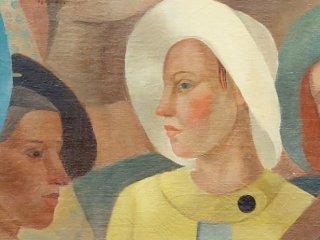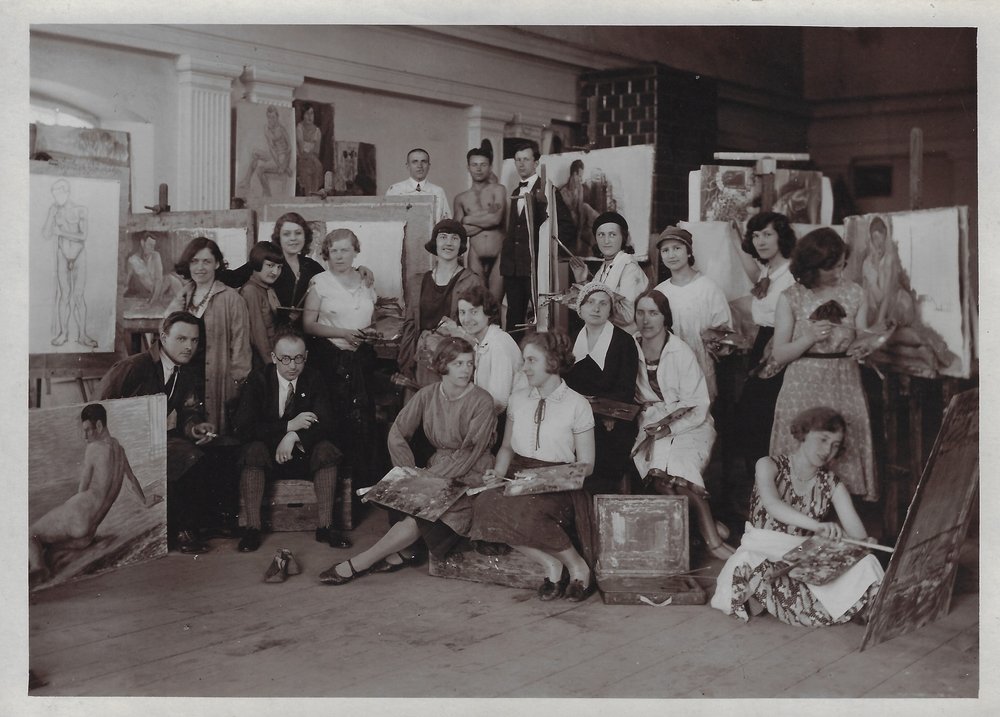Display of the works of the Karpiński Sisters
Irena (1901-1985) and Joanna (1902-1999) Karpińska are known as the founders of the Municipal School of Painting and Art Industry in Siedlce, which was active between 1944 and 1947, but also as artists whose pedagogical activities had a great impact on a group of Siedlce artists operating during the occupation and after the Second World War.
The sisters’ artistic education began much earlier, first in Poznań where they both attended college, and then Irena, after a year of Polish philology at the University of Poznań, joined Joanna in 1925 to study together at the School of Decorative Arts and Artistic Industry.
The next stop on the Karpińska sisters’ path of artistic development was Vilnius, which largely shaped the painting techniques they used and the subject matter of their works. In 1928, Irena Karpińska entered the Faculty of Fine Arts of Stephen Báthory University in Vilnius, followed a year later by Joanna. Both began their five-year long painting studies in the studio of the well-known and respected artist Ludomir Sleńdziński. Studying under the Vilnius master was a breakthrough moment for the Karpińskas in their art.
Although Irena’s and Joanna’s destinies were shaped similarly during these years, their activities and artistic choices, despite the same techniques, differed in many respects.
The works presented here cover the wartime period of the creations of Irena and Joanna Karpińska. However, it is worth pointing out that it was the years of interwar education in Sleńdziński’s studio and the influence of other prominent Vilnius artists of the 1920s-30s, such as Tymon Niesiołowski, Michał Rouba, Jerzy Hoppen, and Bronisław Jamontt, that were most significant for the sister painters.
In her work, Irena Karpińska focuses on man and his role and place in the world. Her works are characterised by solemnity and nostalgia, not exactly easy on the eyes, but certainly an inspiring reflection on human existence. The elder sister’s works speak to the social problems of her times, proving her to be an extremely careful observer of life. Another particular sensibility is apparent in two works from 1939—a drawing and a colour print in which the artist directly alludes to the turmoil of war and the catastrophe that befell the peoples of Europe. Irena in her drawings, prints, and monotypes touched on themes of love and hatred, the creation of beautiful things and their annihilation, joy and suffering, all in direct reference to man, who always remained at the centre of her artistic considerations.
The younger of the sisters, Joanna Karpińska, created in monotype technique mainly still-life compositions and landscapes. War themes are absent from her work. The artist depicts social life, capturing unique moments from the lives of the people she portrays. From the period before the outbreak of the war, a particularly important work of Joanna’s is the woodcut In a Café Garden, created in Vilnius in 1934. It portrays the Lithuanian capital as a modern, vibrant city, a place for meetings and the development of artistic creativity. This work, with minor changes, was repeated by Joanna in the early 1940s. Perhaps she was driven by nostalgia for the pre-war reality and the former Vilnius, which was forever changed by the experience of the Second World War.

